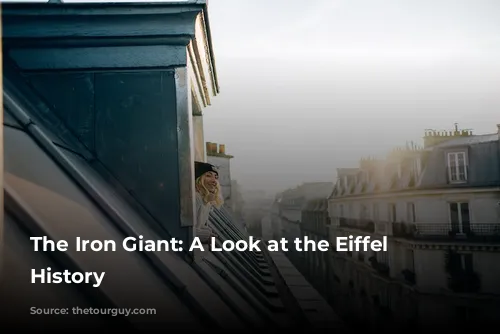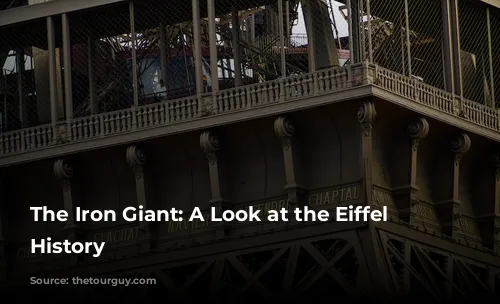The Eiffel Tower is a symbol of Paris, but its journey from a simple idea to a global landmark is fascinating. It’s a story of passion, innovation, and a little bit of controversy.
From Bridges to a Monumental Structure
The Eiffel Tower wasn’t Gustave Eiffel’s first foray into the world of engineering. Before this iconic structure, he was known for his bridges and train stations, showcasing his mastery of iron construction. Eiffel’s career began with the Bordeaux Bridge, a remarkable feat of engineering that connected Paris to Bordeaux. This bridge, unfortunately, met its demise during World War II, but was later rebuilt by his grandson.
Eiffel’s talent was evident in the Budapest-Nyugati train station, a masterpiece that showcased his vision for combining metal and stone. He was proud of his independence in this project, setting up his own company with Théophile Seyrig to build the train station. This project marked a pivotal moment in Eiffel’s journey, allowing him to venture beyond traditional structures and experiment with new materials.
Engineering the Statue of Liberty
Eiffel’s talents extended beyond bridges and train stations. He was also involved in the Statue of Liberty, providing the engineering expertise for this iconic symbol of freedom. The Statue of Liberty’s internal skeleton was designed to withstand strong winds, a testament to Eiffel’s understanding of structural strength.
The construction of the Statue of Liberty was a remarkable feat. It was built and assembled in France, then disassembled and shipped to New York, where it was reassembled. It’s a testament to the ingenuity of the time and the enduring power of human creativity.
The Birth of an Icon
While Gustave Eiffel’s name is synonymous with the tower, it was actually designed by Émile Nouguier and Maurice Koechlin, two engineers working under him. The inspiration for the design came from an observatory in New York City, a temporary wooden structure that had been dismantled before it burned down.
Initially, Eiffel wasn’t particularly impressed by their design. He encouraged them to refine it, sensing its potential to become something special. The tower was a pet project, designed to win the bid for the 1889 World’s Fair.
Eiffel’s perseverance was key to the tower’s success. He politicized the project, seeking support from local and national government officials. It wasn’t until Jules Grévy, the President of France, announced a competition for a metal structure for the World’s Fair that the tower’s fate took a turn. It seemed that the competition was rigged in Eiffel’s favor, with his design being the clear frontrunner.

Building a Monument
Construction began on January 28th, 1887, and was remarkably fast, considering the tower’s sheer size and complexity. Within 27 months, the Eiffel Tower was complete, standing tall as the world’s tallest structure.
The tower’s construction was a testament to meticulous planning and efficient execution. It’s supported by four massive concrete slabs, each resting on a limestone base. The four legs of the tower are connected by arches, forming multiple observation decks.
The tower was designed with elevators to transport visitors to each level, as well as a staircase for those who preferred a more traditional ascent. The inauguration on March 31st, 1889, was a grand affair, with Eiffel leading government officials and press to the top of the tower, where the French tricolour was raised amidst a 25-gun salute.
The City of Light
Paris is known as the City of Light, but this title predates the Eiffel Tower. However, the tower has become an integral part of the city’s luminous landscape.
Originally, the tower was illuminated with gaslights, a laborious and inefficient process. In 1900, electric bulbs replaced the gaslights, making the tower brighter and safer. Over the years, the lighting system has been modernized, culminating in the installation of sodium-vapor lights in 1985.
The current lighting system, designed by Pierre Bideau, illuminates the tower from within, making it a beacon of light in the Parisian night. In 2000, the addition of sparkling bubbles further enhanced the tower’s beauty, creating a dazzling spectacle that shines for five minutes every hour.
A Symbol of Paris
The Eiffel Tower is more than just a piece of engineering; it’s a symbol of Paris, a testament to human ingenuity, and a beacon of light that continues to captivate visitors from around the world. The tower’s rich history, from its humble beginnings as a bridge and its connection to the Statue of Liberty, to its monumental construction and its enduring beauty, make it an icon that will continue to inspire awe for generations to come.


